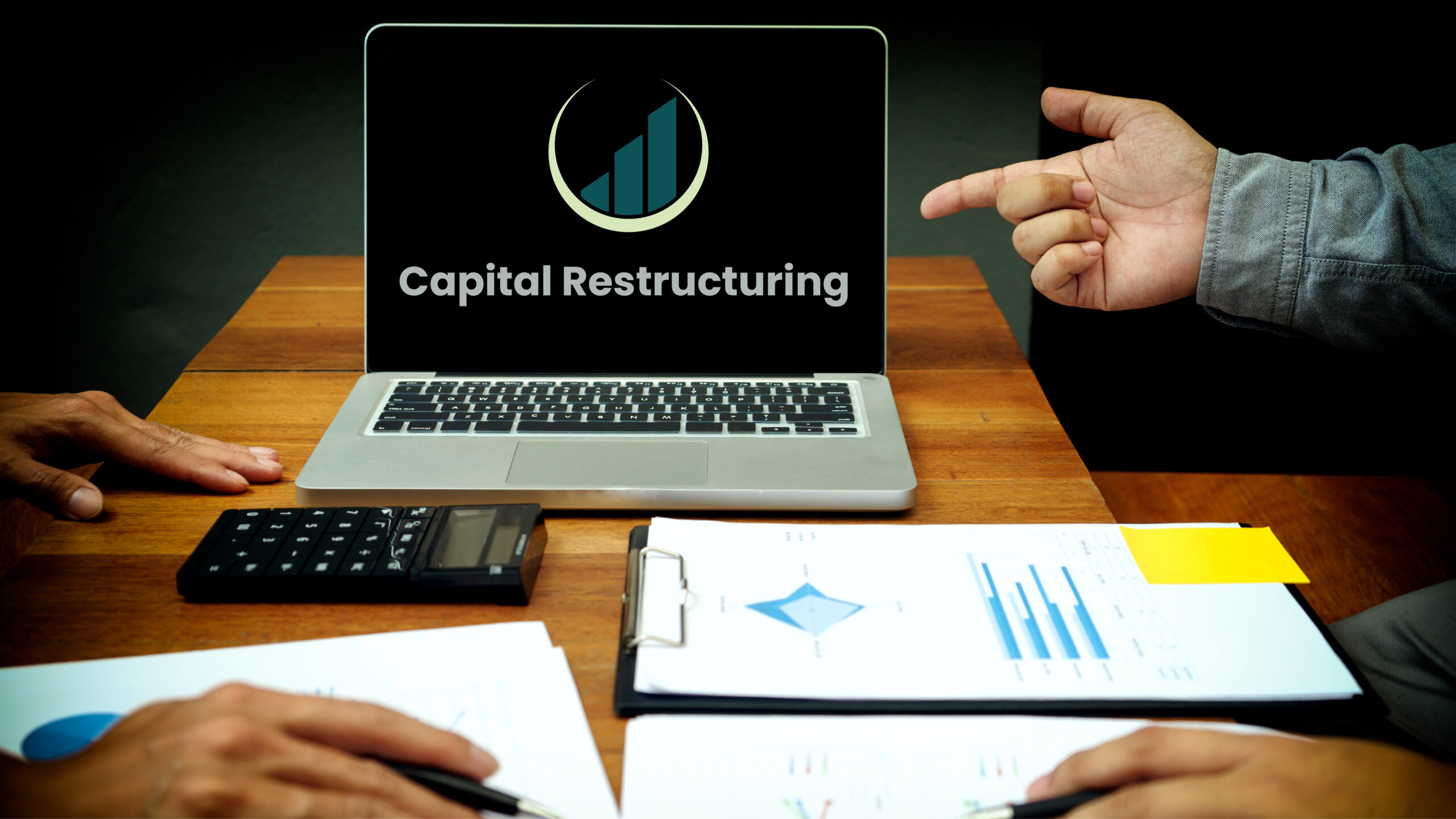Capital Restructuring is often the lifeline when businesses face tough financial decisions like these:
“I had to choose between paying my staff or my suppliers.”
“My bank accounts are frozen, and I have 10 unpaid invoices on my desk.”
“We’re profitable on paper, but I don’t have enough to cover next month’s rent.”
If any of these sound painfully familiar, you’re not alone. Over 80% of business failures happen because of poor cash flow management. That’s the cold, brutal truth no one tells you when you start a business.
Whether you’re running a family business, a growing SME, or even a corporation, cash flow problems creep up like silent killers. They don’t knock. They smash through the front door, leaving a trail of panic.
But here’s the hope: It can stop the bleeding and help you breathe again. It’s not just about surviving—it’s about repositioning your company to win. Let’s break down how this works in real life.
What Is Capital Restructuring?
Imagine your business as a car flying down the highway. Suddenly, warning lights flash, and the engine sputters. Do you keep going? No, you pull over and fix the core issues.
That’s what capital restructuring does for a company. It’s the intentional process of reorganizing how your business is funded through debt, equity, and asset adjustments to stabilize capital cash flows and restore the financial engine.
The right restructuring plan can help avoid the ultimate disaster: corporate debt restructuring through bankruptcy courts. You don’t want to go there.
Let me give you some reality checks:
- 69% of business owners have lost sleep over capital cash flow problems (Intuit QuickBooks).
- 43% of SMEs were at risk of running out of cash during the pandemic in under six months (McKinsey & Co.).
Even mega-corporations like Evergrande and Toys “R” collapsed because they ignored the signs.
When cash dries up, panic occurs: employees worry, suppliers back off, lenders circle like sharks, and loyal customers lose faith.
The scariest part? A profitable company can still go bankrupt because of poor cash flow management.
You cannot afford to wait for a miracle. Company restructuring must happen fast—or it won’t happen at all.
How Do You Know It’s Time for Capital Restructuring?

If any of these symptoms sound familiar, you are overdue for this plan:
- You’re constantly robbing Peter to pay Paul.
- Your creditors no longer return your calls.
- You are juggling emergency loans to meet payroll.
- Your growth plans are dead because of a lack of liquidity.
- You are dangerously close to violating loan covenants.
This is your wake-up call. It could be the only way to survive.
Capital Restructuring Plan That Works
1. Debt Restructuring
The first step? Debt restructuring. This is where we work with banks, lenders, and even suppliers to renegotiate your loan terms:
- Longer repayment schedules
- Lower interest rates
- Debt consolidation
- In extreme cases, partial debt forgiveness
The goal is simple: stabilize your capital cash flows now so you can focus on your business—not just survival.
Case example: One of our client companies reduced loan payments by 35% in 60 days and saved over PKR 1.5 million in interest annually through smarter corporate debt restructuring.
2. Equity Adjustments
Next comes the hard part: equity.
You may need to issue new shares to raise capital or buy back shares for more control.
This can feel like you’re giving away part of your company. But trust me, temporary dilution is always better than permanent closure.
It works by looking at all options, including equity, to stabilize the company.
3. Asset Reallocation
What are you holding onto that no longer serves you?
Idle machinery, extra vehicles, underperforming divisions… They’re dead weight.
We advised a manufacturing client to sell unused land for PKR 34 million. That cash paid down high-interest debt immediately, improving capital cash flows and saving the business.
This is textbook company restructuring: sacrifice the unnecessary to save the essential.
Role of Financial Models for Capital Restructuring
You can’t just guess your way out of the crisis. You need financial models for this to guide decisions:
- Three-Statement Model: How income, balance sheet, and cash flow changes interact.
- Discounted Cash Flow (DCF): Projects future cash flows to value assets or the whole business.
- Scenario Analysis: Stress-tests your business model for worst-case and best-case outcomes.
We use these exact tools every day for company restructuring projects. Data over emotion—always.
A Real Story: From Near-Collapse to Recovery
Last year, a textile company in Lahore called us in total panic.
They had:
- Suppliers refusing deliveries
- A bank is about to seize assets
- Unpaid staff for two months
Within 120 days, we:
- Completed corporate debt restructuring with their banks
- Sold excess stock to raise immediate cash
- Introduced new equity partners
Result? The company not only survived, but it also expanded operations within 12 months. Their capital cash flows are positive for the first time in 3 years.
This is the power of these done right.
How MSAFDAR Can Help?
At MSAFDAR, we don’t offer generic advice. We fix real problems for real businesses.
Our experts can help you:
- Negotiate smarter debt restructuring terms
- Rebalance your equity to stabilize ownership
- Unlock capital with targeted company restructuring strategies
- Use industry-leading financial models for it
Turn your cash flow nightmare into your greatest comeback story. With
MSAFDAR, survival is just the start—we aim for thriving.
Let’s partner to make that happen.
FAQs
Q1: What exactly is capital restructuring?
A: It’s reorganizing your debt, equity, and assets to improve cash flow and keep your company alive and growing.
Q2: How is debt restructuring different from it?
A: Debt restructuring only looks at loans. It includes debt, equity, and assets.
Q3: Is It only for companies in crisis?
A: No. High-growth businesses also use itwhen they scale faster than their cash flow.
Q4: What risks come with restructuring?
A: You may temporarily lose equity control or lower your credit score. But the risk of doing nothing is usually much worse.
Q5: How long does it take?
A: Anywhere from 3 to 12 months, depending on company size and complexity.
Q6: Can MSAFDAR help?
A: Absolutely. We’ve helped dozens of companies through tough corporate debt restructuring and full company restructuring turnarounds.



